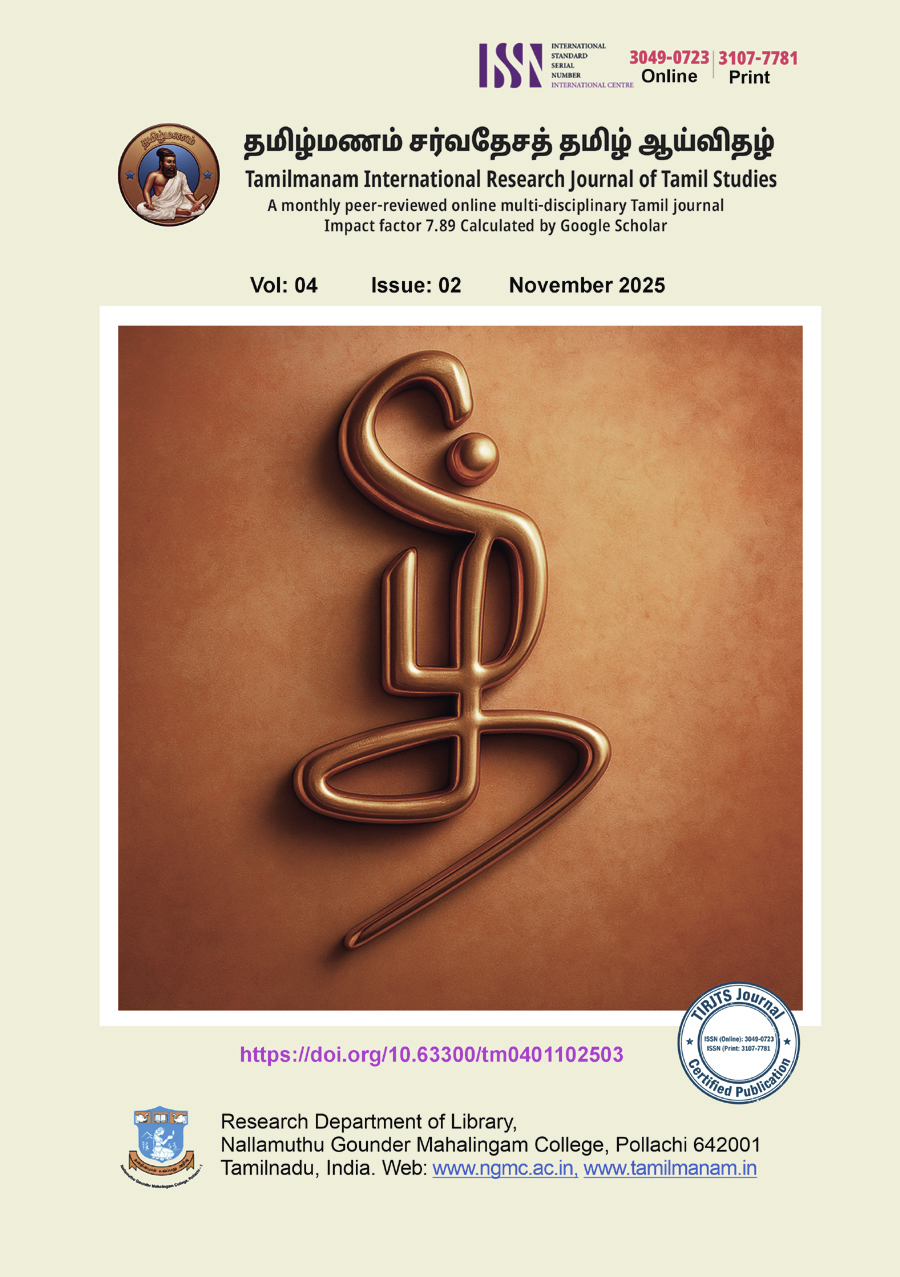சித்தர் வாக்கியங்களில் தொட்ட சினிங்கி: மருத்துவச் சிறப்புகள் மற்றும் ஆன்மீகப் பொருள்
The Sensitive Plant in Siddhar Teachings: Medicinal Efficacy and Spiritual Significance
DOI:
https://doi.org/10.63300/tm0402112514Keywords:
Thotta Sinnungi, Mimosa pudica, Siddhar, Spiritual SignificanceAbstract
The Sensitive Plant, Thotta Sinnungi (Mimosa pudica), with its distinctive characteristic of recoiling upon touch, holds a prominent position within the tradition of Siddha Medicine. This herb is extensively documented in Siddhar writings, not only for its profound therapeutic benefits but also for its deep-seated spiritual and symbolic import. This study employs an interdisciplinary approach, integrating perspectives from literary analysis, pharmacology, and phytochemistry, to explore this dual nature of Mimosa pudica.
The research primarily investigates the depictions of Thotta Sinnungi within classical Siddha literature. These texts detail its comprehensive application across various ailments, including inflammatory conditions, gynecological disorders, wound healing, and urinary tract issues. Concurrently, the study delves into the spiritual and esoteric dimensions of the herb. In Siddhar texts, it is cited as a purifying force offering protection against negative energies and serves as a tool in specific meditative and spiritual practices. Its characteristic ‘recoiling’ nature also functions as a biological metaphor for the virtue of humility and self-control.
A central objective of this research is to correlate these traditional claims with the findings of modern scientific investigations. Contemporary phytochemical research has identified biologically active compounds in Mimosa pudica, such as alkaloids and flavonoids. These findings provide a scientific basis for the traditionally described antimicrobial, anti-inflammatory, and diuretic effects.
Ultimately, this study aims to bridge the ancient wisdom recorded in Siddha literary tradition with modern pharmacological evidence, promoting a holistic understanding of Thotta Sinnungi. This discourse highlights the enduring value of traditional knowledge for medicinal discovery and underscores its potential for future pharmaceutical development.
Downloads
References
1. In Vitro Antioxidant and Antimicrobial Potency of Mimosa pudica of Terai region of Nepal. PMC. 2022.
2. Phytochemistry and Medicinal Importance of Herb Mimosa pudica — review (Colab/2023).
3. Evaluation of antioxidant, antimicrobial activities, and phytochemical screening in Mimosa pudica flower extracts. Flora Journal, 2024.
4. Gunapadam / Siddha council documentation — mentions of Thottarchinungi in Siddha classical listings. (NCISM / Siddha resources).
5. Diagnosis and Treatment of Cancer – Siddha Perspective (Siddha Council PDF) — mentions Mimosa pudica (Thottarchurunki) in classical verses. 2018 (digital compendium).
6. A comprehensive review on the ethnopharmacological potential of Mimosa pudica (IJPR/2024).
7. Prabha, T., & Rajendiran, S. (2021). Analgesic and Anti-inflammatory Activities of Mimosa pudica Root Extract in Animal Models. Journal of Natural Remedies, 21(3), 445-452.
8. Gautam, S., et al. (2023). Comprehensive phytochemical profiling and evaluation of in vitro antioxidant activities of Mimosa pudica Linn. South African Journal of Botany, 162, 702-711.
9. Ravi, L., & Priya, S. (2022). Antimicrobial efficacy of Mimosa pudica against clinically isolated pathogens. Journal of Applied Pharmaceutical Science, 12(4), 125-130.
10. Subash, C., & Nandhini, R. (2023). Topical application of Mimosa pudica gel accelerates wound healing and attenuates inflammation in rats. Journal of Ethnopharmacology, 311, 116435.
11. Vijayalakshmi, R., et al. (2021). Anxiolytic and Adaptogenic Activity of Mimosa pudica Linn.: A Preclinical Study in Rodents. Journal of Pharmacology and Pharmacotherapeutics, 12(2), 55-60.
12. Ramesh, K., et al. (2023). Comparative evaluation of wound healing activity of Mimosa pudica root extract in different vehicles: An experimental study. Journal of Ayurveda and Integrative Medicine, 14(2),
Downloads
Published
Issue
Section
License
Copyright (c) 2025 Dr. V.C. Srinivasan, Dr. A. Lakshmi Duttai, Dr. K. Chanthanam, Dr. Padma (Author)

This work is licensed under a Creative Commons Attribution 4.0 International License.
Our journal adopts CC BY License Creative Commons Attribution 4.0 International License http://Creativecommons.org//license/by/4.0/ . It allows using, reusing, distributing and reproducing of the original work with proper citation.


